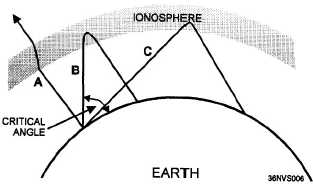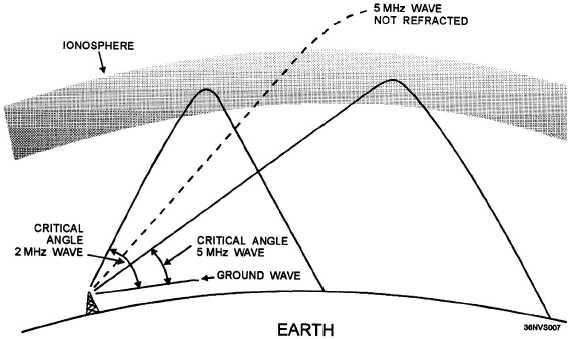particular layer, it may still be refracted by a
higher layer if its frequency is lower than the
higher layer’s critical frequency.
Angle of Incidence and Critical Angle
When a radio wave encounters a layer of the
ionosphere, that wave is returned to earth at the
same angle (roughly) as its angle of incidence.
Figure 1-6 shows three radio waves of the same
frequency entering a layer at different incidence
angles. The angle at which wave A strikes the
layer is too nearly vertical for the wave to be
refracted to earth, However, wave B is refracted
back to earth. The angle between wave B and the
earth is called the critical angle. Any wave, at a
given frequency, that leaves the antenna at an
incidence angle greater than the critical angle will
be lost into space. This is why wave A was not
refracted. Wave C leaves the antenna at the
smallest angle that will allow it to be refracted and
still return to earth. The critical angle for radio
waves depends on the layer density and the
wavelength of the signal.
Figure 1-6.—Incidence angles of radio waves.
As the frequency of a radio wave is increased,
the critical angle must be reduced for refraction to
occur. Notice in figure 1-7 that the 2-MHz wave
strikes the ionosphere at the critical angle for that
frequency and is refracted. Although the 5-MHz
line (broken line) strikes the ionosphere at a less
critical angle, it still penetrates the layer and is
lost As the angle is lowered, a critical angle is
finally reached for the 5-MHz wave and it is
refracted back to earth.
Figure 1-7.—Effect of frequency on the critical angle.
1-6



